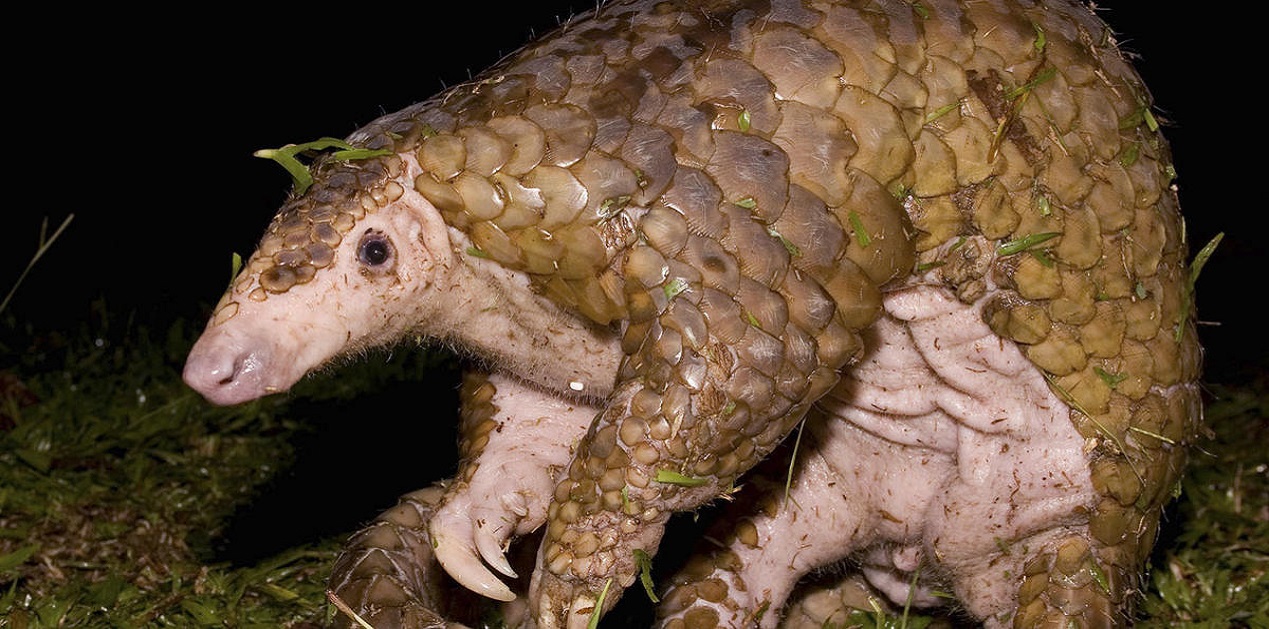Scientists and experts are still uncertain about the source of the SARS-CoV-2 virus (COVID-19). Some of the possible suspected species connected with the virus are horseshoe bats that are known to host disease causing pathogens; pangolin the most trafficked wildlife species used both as food and in traditional Chinese medicine has been implicated; however, transmission of virus from snakes to humans has been refuted.
It is well known that the virus originated in China and during a press briefing in January 2020, the Director of China's Center for Disease Control and Prevention had stated that the “origin of the new coronavirus is the wildlife sold illegally in a Wuhan seafood market”.1 Consequently, the Standing Committee of the National People's Congress banned illegal trading of wildlife to save people's lives and health, and announced severe punishment for the violators.2 It also called on local authorities to “strengthen supervision and inspection, and strictly investigate and punish violations of this decision and relevant laws and regulations.”3
Although Shenzhen in southeastern China has taken lead and announced prohibition on consumption of cats and dogs as food, a recent media report has noted that a wet market in Guilin in south-west China was reportedly selling cats and dogs, and a seller in Dongguan, southern China was seen advertising bats, snakes, lizards and toads to assist with common ailments. 4 While the Chinese authorities surely have procedures and processes to prosecute the lawbreakers, it is time to address prevalent illegal wildlife trade in Asia.
Illegal wildlife trade has been identified as the fourth largest illicit transnational activity in the world and the United Nations Office of Drugs and Crime has estimated the global wildlife trafficking industry to be worth between US$7 billion and US$23 billion annually.5
It is widely accepted that illegal trade in wildlife is a criminal activity and States have signed the ‘Convention on International Trade in Endangered Species of Wild Fauna and Flora’ (CITES) to ‘ensure that international trade in specimens of wild animals and plants does not threaten their survival’. 6 Besides, States are also committed to United Nations mandated Sustainable Development Goals (SDG) wherein SDG-15 requires States to “Take urgent action to end poaching and trafficking of protected species of flora and fauna and address both demand and supply of illegal wildlife products.” 7
The SAARC Member States acknowledged the issue in 2005 and set up the South Asia Wildlife Trade Initiative (SAWTI) during the Tenth Meeting of Governing Council for the South Asia Co-operative Environment Programme (SACEP).8 The SAWTI put in place “foundations for a cooperative effort to crack down on illegal trade and to improve the management of wild animals and plants that can be legally traded under national laws in the region,” and it was advised to developing a South Asia Regional Strategic Plan on Wildlife Trade for the period 2008-2013.
In 2014, the9thEast Asia Summit (EAS) declaration called for “increased harmonization, capacity building, support, coordination and resources to optimize crime prevention and criminal justice to combat illicit trafficking and illegal wildlife trade throughout the region”.9
The ASEAN States are committed to CITES as also to the successful implementation of the Plan of Action for ASEAN Cooperation on CITES and Wildlife Enforcement, 2016–2020.10 As chair of the ASEAN for 2019, Thailand had chosen “wildlife trafficking (along with marine debris) as one its two priority environmental issues for raising profile,”11 The ‘Chiang Mai Statement of ASEAN Ministers Responsible For Cites And Wildlife Enforcement On Illegal Wildlife Trade’ issued during the Special ASEAN Ministerial Meeting On Illegal Wildlife Trade held 21–22 March 2019 at Chiang Mai, Thailand is noteworthy and notes that the “domestic wildlife markets need to be regulated and enforced thoroughly to prevent over exploitation and ensure the sustainable population of endangered species”.12 It is noteworthy that ASEAN has been forward-looking in dealing pandemics ever since the 2003 SARS epidemic. In the instant case of COVID-19, Vietnam which holds the ASEAN Chairmanship Year 2020, has announced that the ASEAN Coordinating Council (ACC) will compile a report on the COVID-19 to be submitted to ASEAN leaders at the 36th ASEAN Summit scheduled in Vietnam in April.
As far as the Bay of Bengal Initiative for Multi-Sectoral Technical and Economic Cooperation (BIMSTEC) is concerned, the issue of trade in wildlife is not included in any of the Priority Sectors. The recent Senior Officials’ Meeting (SoM) in Colombo in March 2020 addressed two important issues i.e. the conclusion of the BIMSTEC Charter and reorganization of the Priority Sectors. 13 There would now be seven Priority Sectors as against 14, and it is hoped that the restructuring14 would result in strengthening the institutional mechanisms of the grouping. However, it is not known if the issue of trade in wildlife was discussed
The World Wildlife Fund (WWF) has noted that illegal markets for live and dead wild animals are thriving in many Southeast Asian countries particularly in areas closer China i.e. Lao, Thailand and Myanmar. 15 Under the circumstances, it is not only prudent but critical for BIMSTEC Member States to take initiatives and include issues concerning illegal trade in live and dead wild animals in one of its Priority Sectors. This was one of the recommendations made in a recent volume16 published by the Vivekananda International Foundation, New Delhi which stated “Due to the magnitude of this crime in Bay of Bengal region, commissioning a new Sub-Group on wildlife trafficking will be essential for effective implementation of the CITES guidelines.”
Notes
- Matthew Impelli, “What Is A Wet Market? Calls For Crackdown On Selling Live Animals Amid Virus Pandemic Corona”, https://www.newsweek.com/what-wet-market-amid-pandemic-crackdown-called-selling-live-animals-china-1495278 (accessed 03 April 2020).
- Wang Chen and Jiang Yifan, “The legal proposals shaping the future of wildlife in China”, https://chinadialogue.net/article/show/single/en/11940-The-legal-proposals-shaping-the-future-of-wildlife-in-China (accessed 04 April 2020).
- “China's legislature adopts decision on banning illegal trade, consumption of wildlife”, http://www.xinhuanet.com/english/2020-02/24/c_138814328.htm (accessed 03 April 2020).
- “Chinese wet markets still selling bats”, https://www.dailymercury.com.au/news/chinese-wet-markets-still-selling-bats/3984833/ (accessed 03 April 2020).
- Jillian Louis, “COVID-19: The death blow to wildlife trafficking?”, https://theaseanpost.com/article/covid-19-death-blow-wildlife-trafficking (accessed 04 April 2020). See Vijay Sakhuja and Somen Banerjee, Sea of collective Destiny: Bay of Bengal and BIMSTEC (New Delhi: Pentagon Press, 2020), p.
- “Convention on International Trade in Endangered Species of Wild Fauna and Flora”, https://www.cites.org/eng/disc/what.php (accessed 03 April 2020).
- “SDG 15: Life on Land”, https://in.one.un.org/page/sustainable-development-goals/sdg-15/ (accessed 03 April 2020).
- “SAARC nations pledge cooperation to curb wildlife trade”, https://economictimes.indiatimes.com/news/economy/foreign-trade/saarc-nations-pledge-cooperation-to-curb-wildlife-trade/articleshow/2766865.cms (accessed 03 April 2030).
- “EAS Declaration On Combating Wildlife Trafficking”, https://cites.org/sites/default/files/eng/news/sundry/2014/EAS%20decleration%20on%20combating%20wldlife%20trafficking.pdf (accessed 03 April 2030).
- “ASEAN to Strengthen Efforts to Curb Illegal Wildlife Trade”, https://www.maritime-executive.com/article/asean-to-strengthen-efforts-to-curb-illegal-wildlife-trade (accessed 03 April 2030).
- Karl Wilson, “ASEAN vows to rein illegal wildlife trade”,http://www.chinadaily.com.cn/a/201903/27/WS5c9adc0ca3104842260b2cc9.html (accessed 03 April 2020).
- Ibid.
- ‘Chiang Mai Statement of ASEAN Ministers Responsible for CITES and Wildlife Enforcement on Illegal Wildlife Trade’ https://asean.org/storage/2019/06/Chiang-Mai-Statement-of-ASEAN-Ministers-Responsible-for-CITES.pdf (accessed 03 April 2030).
- “Sri Lanka to Host BIMSTEC in September”, https://www.presidentsoffice.gov.lk/index.php/2020/03/04/sri-lanka-to-host-bimstec-in-september/?lang=en (accessed 04 April 2020).
- Lead Country and Priority Sector: Sri Lanka - Science, Technology and Innovation; Bangladesh-Trade and Investment; Bhutan-Environment and Climate Change; Myanmar- Agriculture and Food Security; India-Security; Nepal-People-to-People Contact; and Thailand-Connectivity.
- “WWF Statement on Closing Illegal Wildlife Markets Across the Asia Pacific Region”, http://greatermekong.panda.org/?uNewsID=359094 (accessed 04 April 2020). Also see country database dashboard on import and export of wildlife see http://cites-dashboards.unep-wcmc.org / (accessed 04 April2020).
- See Vijay Sakhuja and Somen Banerjee, Sea of Collective Destiny: Bay of Bengal and BIMSTEC (New Delhi: Pentagon Press, 2020), pp.157-158.
(The paper is the author’s individual scholastic articulation. The author certifies that the article/paper is original in content, unpublished and it has not been submitted for publication/web upload elsewhere, and that the facts and figures quoted are duly referenced, as needed, and are believed to be correct). (The paper does not necessarily represent the organisational stance... More >>
Image Source: https://cbsnews3.cbsistatic.com/hub/i/r/2012/09/04/e41fceb4-a644-11e2-a3f0-029118418759/thumbnail/1200x630/0d8944cabdfde5bb4d4126933949aa7b/pangolin-AP051124120885.jpg











Post new comment